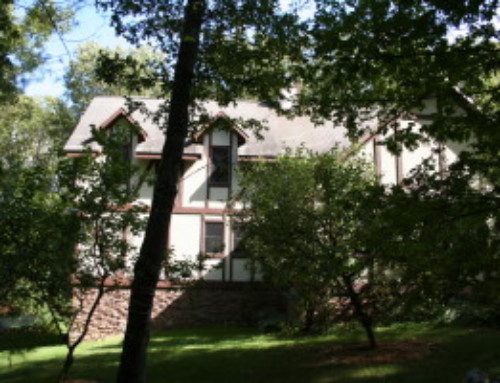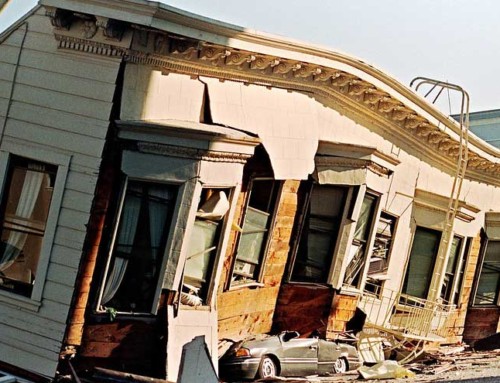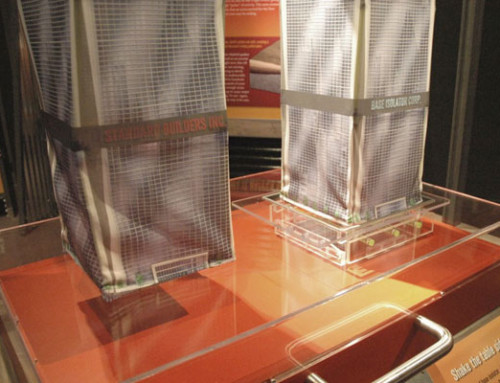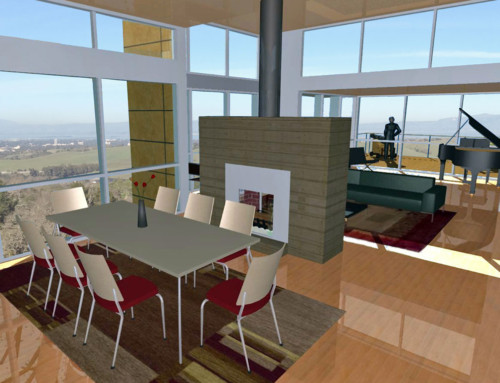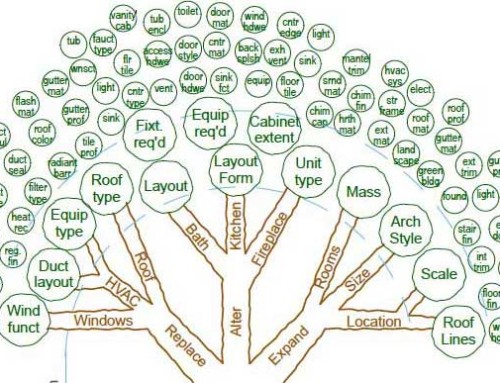Advances In Seismic Technology (Part 3)
The first step of the installation happened “below the surface”. To transfer the loads from the steel frames to the foundation, the Structural Engineer devised a specialized steel column/baseplate to be cast into the concrete. Each post was integrated into the steel reinforcing of the basement concrete wall allowing only a ¼” tolerance from perfect placement — and there were 21 of columns to install. Fortunately, the Contractor was up to the job and handled it beautifully!
After many years of careful planning and hard work, the Hillside House has taken its place as one of the most seismically advanced houses in the country. In previous posts, I related the background and process of design. We’ve finally reached the most exciting part of the story — construction!
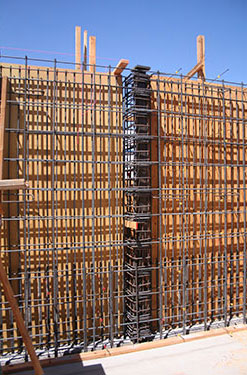
While the concrete form work and reinforcing was underway, we placed the order for 13 fluid viscous dampers from Taylor Devices. After the dampers were manufactured, the factory technicians rigorously tested and “tuned” to the Engineer’s exact requirements: each damper was placed in a hydraulic actuator that simulated the velocity and force that it would experience in an earthquake. You can appreciate the effect of the dampers by looking at one of the test graphs below. The red curve shows the applied forces (23,000 pounds each way!) and the black curve shows the resultant piston motion. The sway and motion of the earthquake are significantly reduced resulting in much lower lateral forces and very little seismic shaking.
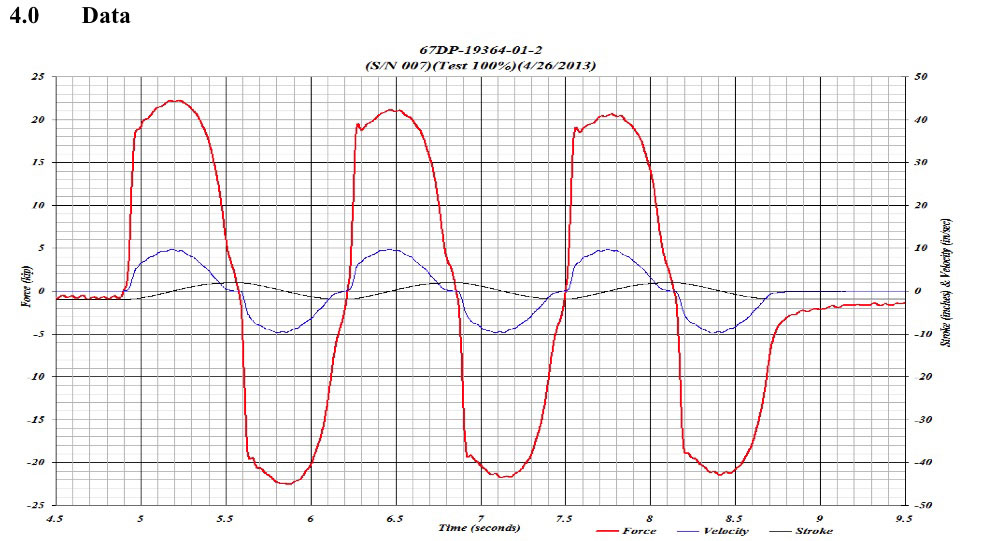
Smoothing out the violent swings of the earthquake
Once the steel frames arrived, they were welded onto the steel plates/columns that had been cast into the concrete months earlier (see above). Since the steel frames need room to move within the wall, we designed the wood framing to allow for the motion yet still provide the proper backing for the interior and exterior finishes.
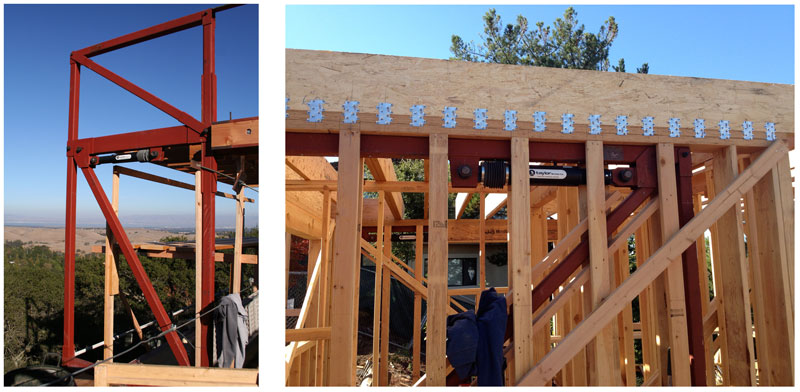
Steel frames and dampers installed
Not all the dampers are hidden behind the drywall, however. Featured above the TV in the Family room, you can see one in a specially designed, illuminated view port so that this extraordinary feature can be appreciated daily.
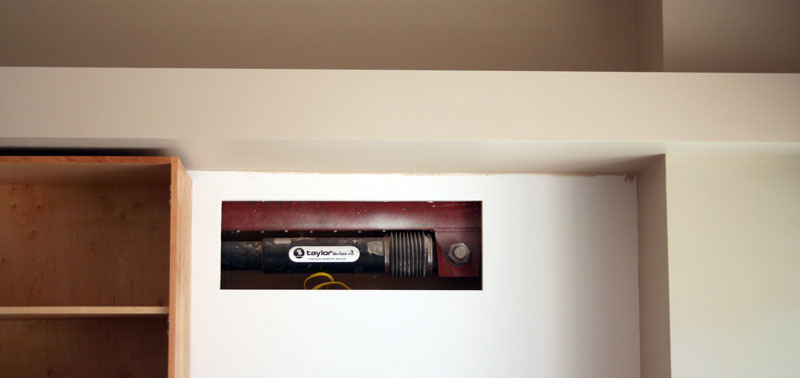
A viewport to see the dampers
Until next time,





